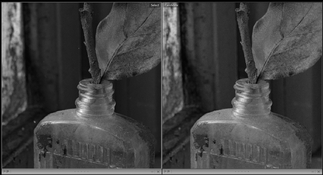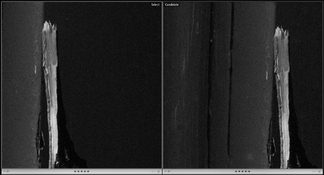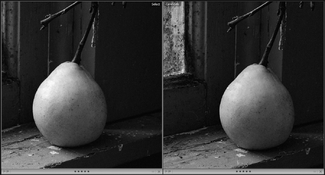Andy,
I did another test with a roll of Tri-X, rated at 250 ASA and bracketed plus and minus 1/2 stop, then cut the roll in half and developed one in 2B-1 for THREE minutes in A and B, and the other half developed in Thornton 2 Bath for FIVE minutes in A and B, as I normally do. Adjusting the times of each developer seemed appropriate, given the dramatic difference between the two results I got yesterday. As expected, this reduced the difference between the two negatives, but did not eliminate those differences.
In these screen shots from Lightroom, the 2B-1 negative scan is on the left and the Thornton 2 Bath negative scan is on the right.
Adjusting the times gave me negatives that were nearly identical in grain characteristics, with perhaps a slight exaggeration of grain in the 2B-1 negatives. The most notable difference was that I perceived an overdevelopment effect still in the 2B-1 negatives: the middle-to-high values had still reached a point of excess for my liking, though the handling of the very highest values wasn't as abrupt as the highlights in the negatives developed for 4 + 4 minutes. I still had difficulty scanning in the shadow information on the 2B-1 negative - it's as if that developer shifts the film's curve, making shadows drift further into inky blackness, and in spite of the highlights being held in place, the mid-to-upper values had an exaggerated separation going on. Acutance and sharpness was about equivalent in both negatives.
I can see 2B-1 being used in some scenarios where boosting tonal separation might be an asset, but for me, it created too much of a graphic contrast look to it. I'll stick to BTTB and PMK, I think.
That said, I'm very glad people like Karl are taking the time to craft interesting developers to explore!





